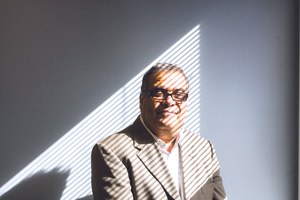The white-hot L.A. tech scene is chock-full of seed-stage funds battling with each other to throw money at mobile apps and software companies. But the region’s health care startups still have a tough time finding their early champions.
A combination of high initial costs and investors who don’t fully understand a complex industry often stands between nascent health care startups and the funding they need to grow. The money generally follows once someone breaks the ice with the first big check, but plenty of companies run out of gas before they can get there.
“You’re in Death Valley once you start a company until you find your first institutional investors,” said Ahmed Enany, president of the Southern California Biomedical Council, a trade association supporting the local health care industry. “There’s a drought at the emerging startups and first stage.”
Marc Feldman, managing partner at the Korea-Israel Life Science Fund in West Los Angeles and a veteran health care investor and entrepreneur, said many potential funders, who tend to come from finance backgrounds, simply don’t know enough about the space to feel comfortable making early investments. And a lot of them see health care startups as a decadelong arrangement that they simply don’t have time to see through.
“The knowledge base of the investors is limited because many of them are not comfortable with the science,” he said. “It’s important to know that life science is not drugs only, and that’s where people get confused.”
No to drugs
A drug can cost well over $1 billion to develop and can take more than 10 years from the start of the process until clinical trials are completed and it can start generating revenue.
A lot of investment funds operate on a much shorter time line, making early stage drug companies a poor fit. But Feldman said many investors don’t realize they don’t need to go along for the whole ride. They can get in and out of drug companies at different stages of the business cycle.
“Most people will not take the drug all the way 10 to 12 years through trials,” he said. “Big pharma companies are abandoning basic research, which has essentially been outsourced to the startup community. These things tend to be flipped, licensed out – if promising – to drug development companies.”
But plenty of other health care startups have a much shorter path to revenue. Medical devices can come to market in as little as three to five years, and animal health also has a fairly quick time line to liquidity. Feldman said these are two sensible areas early stage investors have overlooked. He also mentioned health care technology as a prime candidate for L.A. investors, particularly given their affinity for consumer tech and software-as-a-service companies.
“There’s an enormous integration of life sciences and IT, particularly in the area of biosensors,” Feldman said. “You have new players in the business; companies like Apple Inc. and Google Inc. getting involved in life sciences. It’s an opportunity for Los Angeles.”
While early money from venture capital firms and other entities that traditionally invest at that stage can be hard to come by, fledgling health care startups do have some options.
“You can tap into a small-business innovative research grant,” Enany said. “Find angel groups that can do seed funding. Or you may, depending on the richness of your network, engage in creative financing.”
Even L.A.’s highest-profile health care tycoon, Dr. Patrick Soon-Shiong, who is worth more than $12 billion, has taken advantage of that “creative financing.” His NantHealth has received $400 million from the Kuwait Investment Authority, which is controlled by the government of the oil-rich Persian Gulf nation. Unlike a VC fund or private equity firm, which have to hit periodic performance targets for their investors, the Kuwaiti investors have a longer time horizon.
Sofie Biosciences, a molecular imaging company in residence at Culver City incubator Momentum Biosciences, raised a $5 million round late last year that included Indian megaconglomerate Tata Industries, another deep-pocketed and patient investor.
Angel investors, who scatter many small investments in startup companies with the hope that a handful of them make it big, are another option. But the high capital requirements of health care companies prevent them from having as much of an impact as they might in tech or consumer product companies.
Enany said that there’s been a promising shift in health care investing, with more money coming in earlier on in development, but there’s still a noticeable lack of firms willing to put up cash at that critical first stage. He places a lot of the blame on the younger generation of VCs, who he said don’t really understand the business and lack the insight that comes from spending years in the field.
“Young M.B.A.s just know how to do the spreadsheet,” he said. “Health care venture investing is about the vision. Many of these idiots passing on deals, my jaw drops. They don’t see it.”
Feldman agrees, saying the easy returns of the tech boom have taken a toll on health care venture investing.
“The bottom line is life science is a hard intellectual discipline,” Feldman said. “You have to know something, you can’t BS about it. Many of the investors do not take the time to truly understand.”

